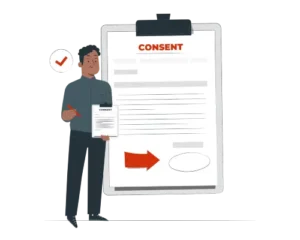Marketing is a fast-evolving field, and CMOs today are expected to drive results faster, more efficiently, and more intelligently than ever before. Yet, many marketing departments are bogged down by time-consuming, repetitive manual processes that divert attention away from high-value, strategic work. Robotic Process Automation (RPA) is emerging as a game-changer, offering marketing teams the ability to automate routine tasks and focus on innovation.
This blog provides a comprehensive roadmap for CMOs to implement RPA in Marketing, highlighting the key processes that can benefit from automation, challenges to watch out for, and actionable steps to integrate RPA into your marketing operations.
Why RPA is Critical for Today’s Marketing Teams
RPA is transforming industries by automating routine processes, and marketing is no exception. For CMOs under pressure to deliver results faster while keeping costs down, RPA offers a unique opportunity to enhance operational efficiency, scale processes, and optimize performance. Below are some reasons why RPA is essential for modern marketing departments:
1. Operational Efficiency
Manual tasks, such as data entry, campaign reporting, and lead management, consume an enormous amount of time. RPA can take over these repetitive, labor-intensive tasks, allowing marketing teams to focus on more strategic areas, such as creative development and campaign innovation. Automating these processes leads to a significant boost in productivity.
For example, RPA can automate the process of downloading leads from multiple marketing platforms and uploading them to a CRM, ensuring that data flows seamlessly without human intervention.
2. Cost Savings
Implementing RPA leads to immediate cost savings by reducing the need for human resources to perform low-skill, repetitive tasks. Studies from Deloitte reveal that organizations implementing RPA have reported up to a 52% reduction in operational costs. For marketing teams, this could mean reallocating saved resources to initiatives that drive growth, like customer acquisition and brand-building.
3. Improved Accuracy
Human errors in marketing processes can lead to incorrect data analysis, poor targeting, and inefficient campaigns. RPA ensures accuracy in data handling by automating processes that are prone to mistakes, such as data migration or customer segmentation. With RPA, data remains consistent across systems, reducing costly mistakes.
According to Deloitte, RPA helps organizations reduce human error by 90%, a figure that will only grow as automation technology improves.
4. Scalability
As marketing campaigns and customer engagement efforts grow, so do the operational challenges. RPA provides scalability without the need for additional human labor, allowing marketing teams to handle a higher volume of tasks without sacrificing quality. This is particularly beneficial for CMOs looking to expand their marketing efforts into new channels or global markets without dramatically increasing headcount.
McKinsey estimates that organizations can expect 70-80% faster task processing times through the use of RPA, further driving scalability.
Identifying Key Marketing Processes Suitable for RPA
Not all marketing tasks require automation, but many can benefit from it. Here are key areas where RPA in marketing can deliver the most value:
1. Data Management and Analysis
Marketing teams deal with vast amounts of data across multiple channels, from email campaigns to social media analytics. RPA can automate data collection, integration, and cleansing tasks, saving hours of manual effort and ensuring that the data is accurate and up to date.
For instance, RPA can automatically pull customer data from various touchpoints (website forms, social media interactions, etc.), segment the data based on behavior or demographics, and then feed it into a marketing automation tool like HubSpot or Marketo for personalized campaigns.
2. Campaign Management
Managing digital campaigns across channels like email, paid ads, and social media is complex and time-consuming. RPA can automate various aspects of campaign management, including the setup, scheduling, and reporting of campaigns. This automation ensures that campaigns run on time, budget allocation is optimized, and performance metrics are tracked in real-time.
For example, RPA can handle the bidding process in programmatic advertising by adjusting bids based on real-time performance data, optimizing your ad spend without constant human oversight.
3. Customer Engagement and Lead Nurturing
RPA can improve how marketing teams engage with potential customers through lead nurturing, automated follow-ups, and personalized communication. Trigger-based emails, SMS campaigns, and chatbot responses can all be automated, ensuring consistent customer engagement without requiring manual effort.
Consider an RPA workflow that sends an automated follow-up email to any lead who has viewed a product page but hasn’t completed a purchase. The system can trigger personalized emails with special offers, helping to re-engage potential buyers and increase conversion rates.
4. Performance Reporting and Analytics
One of the most tedious tasks for marketing teams is generating reports that compile data from multiple platforms (CRM, Google Analytics, social media tools, etc.). RPA can pull data from these disparate sources and generate customized reports automatically, saving hours of manual work and providing real-time insights into campaign performance.
By automating reporting, CMOs can make faster decisions based on current performance data, ensuring marketing strategies remain agile and responsive to customer behavior.
5. Content Marketing Operations
RPA can play a crucial role in automating the distribution of content across various platforms. It can handle the scheduling of blog posts, social media updates, and emails, while also analyzing performance data to adjust distribution strategies in real-time.
For example, content scheduling and social media posting can be set to specific times when your audience is most active, maximizing engagement without the need for marketers to be actively involved in the process.
The CMO’s Roadmap to RPA Implementation
Implementing RPA in marketing requires careful planning and a strategic approach. Here is a step-by-step guide for CMOs looking to successfully integrate RPA into their operations:
1. Define Objectives and Scope
Before starting with RPA, CMOs must define clear goals for what they want to achieve with automation. Common objectives include improving campaign efficiency, speeding up lead qualification, or reducing human error in data reporting.
Once the objectives are defined, CMOs should assess which tasks within their marketing operations are most suitable for automation. Typically, the best candidates for RPA are repetitive, time-consuming tasks such as data entry, lead scoring, and campaign execution.
2. Choose the Right RPA Tools and Vendors
Selecting the right RPA tool is critical for success. CMOs should evaluate potential tools based on their ability to integrate with existing martech systems (CRM, CMS, analytics platforms), scalability, and ease of use. It’s also important to choose a vendor that provides strong customer support, as RPA implementation often requires a tailored approach.
According to Fortune Business Insights, the RPA market is expected to grow to $64.47 billion by 2032, and CMOs should look for tools that can evolve with their organization’s needs.
3. Collaborate with IT and Other Departments
Implementing RPA in marketing is not solely a marketing initiative. Collaboration with IT is essential to ensure that the RPA tool integrates smoothly with existing systems, particularly in areas like security and data privacy. For organizations subject to regulations like GDPR or CCPA, ensuring that automation workflows are compliant is critical.
4. Gradual Scaling and Continuous Optimization
Start with a pilot program by automating one or two processes, such as performance reporting or email workflows. Once these workflows prove successful, gradually expand automation across other marketing functions. It’s important to continuously monitor and optimize these processes to ensure they’re delivering value and adapting to changing business needs.
As RPA technology evolves, CMOs can integrate AI-driven automation to handle more complex marketing functions like predictive analytics, customer sentiment analysis, or dynamic customer segmentation.
Potential Challenges and How to Overcome Them
1. Resistance to Change
Resistance from employees is a common challenge when implementing new technologies like RPA. Team members may fear that automation will replace their jobs or reduce creativity. CMOs should clearly communicate that RPA is designed to offload repetitive tasks, allowing the marketing team to focus on high-impact work like strategy and creative thinking.
2. Technical Challenges
Integration with existing systems, especially legacy platforms, can pose technical challenges during RPA implementation. Close collaboration with IT and choosing flexible RPA tools that integrate easily with your martech stack can help overcome these obstacles.
3. Cost vs. ROI
While RPA requires an upfront investment, the long-term gains are significant. According to a Deloitte report, organizations implementing RPA typically see ROI of up to 20% in the first 12 months. Measuring key performance metrics such as time saved, error reduction, and increased campaign efficiency will help justify the initial investment.
Measuring the Success of RPA in Marketing
To measure the success of RPA in your marketing operations, consider tracking the following key metrics:
- Efficiency Gains: Track the reduction in time spent on manual processes.
- Accuracy: Measure the decrease in human error, particularly in data management and reporting.
- Customer Experience: Assess how automation impacts engagement and response times, particularly in personalized campaigns.
- ROI: Calculate savings generated by reducing manual labor and increasing marketing productivity, alongside any revenue gains from improved campaign performance.
Future of RPA in Marketing: Trends CMOs Should Watch
The future of RPA in marketing will be shaped by several key trends:
1. AI-Driven RPA
As RPA continues to evolve, AI integration will make it possible for RPA tools to handle more complex, decision-based tasks. AI-powered RPA tools can analyze customer behavior, predict future trends, and automatically adjust marketing campaigns to optimize results.
2. Hyper-Personalization
RPA will enable marketing teams to offer hyper-personalized experiences at scale. By pulling data from various sources in real-time, RPA can help marketers deliver the right message at the right time, significantly improving customer engagement and conversion rates.
3. Omnichannel Automation
Marketing campaigns are becoming more complex, and RPA will enable seamless automation across multiple channels. Automating tasks across email, social media, mobile, and web will ensure a consistent customer experience without manual oversight.
Conclusion
The future of marketing lies in automation, and RPA in marketing offers a powerful way to improve efficiency, scale operations, and drive better customer engagement. By following this roadmap, CMOs can successfully implement RPA in their organizations, allowing their teams to focus on what matters most—creativity, strategy, and growth.
Is your marketing team ready to embrace the power of automation? Start by identifying key processes to automate and consider launching a pilot RPA project today.
Frequently Asked Questions
RPA can automate lead management, lead qualification, campaign management, lead generation, and more.
Costs vary depending on the tool and implementation scope, but studies show that organizations typically see ROI within the first year of using RPA.
Yes, RPA allows smaller teams to scale their efforts by automating repetitive tasks, freeing up time for strategy and innovation.




